Results 1,591 to 1,600 of 12091
Thread: Anandtech News
-
02-19-12, 06:50 PM #1591
Anandtech: Thoughts on the Mac OS X Mountain Lion Developer Preview
Mountain Lion's first developer preview has been around for a couple of days now, and most of the banner features - largely composed of new imports from iOS - have been covered and discussed not just by us, but also by the majority of the tech press. While we wanted to provide you with some coverage of Mountain Lion, note that it comes with caveats - first, this is a look at the first developer preview of an operating system that isn't due out for at least six months, so everything you see here is very much subject to change. We've done our best (using both gut instincts and precedents set by previous OS X versions) to identify and discuss only features that we're pretty sure will make it into the shipping version of the OS, but nothing's final yet. Second, with just a few days of usage under our belts, this is by no means a comprehensive list of the changes so far, but rather an account of what we found most interesting as a current OS X user and administrator. With all of this in mind, let's get started!
More...
-
02-20-12, 12:10 PM #1592
Anandtech: Intel Demonstrates dual-core Atom SoC with Integrated WiFi Transceiver
This week is the annual International Solid-State Circuits Conference (ISSCC) where chip companies from all walks of life present papers documenting everything from shipping architectures to future research projects. Intel has always had a large presence at the conference and this year is no different. I'm still trying to get my hands on some of the actual papers being presented but Intel invited some press to a pre-brief on the high level announcements from the conference.
One such announcement is a test SoC called Rosepoint. It's a 32nm dual-core Atom SoC with an integrated WiFi transceiver. Despite the high levels of integration we see in smartphone SoCs, WiFi is typically serviced by an external combo chip that integrates WiFi and Bluetooth among other radio technologies. Rosepoint brings the WiFi functionality on-die. The name of the game in the mobile SoC space is integration, making Rosepoint a research project with significant real world implications.
Integration is nothing new of course. AMD, Intel, NVIDIA, Qualcomm, TI and all of the others playing in the SoC space have been slowly integrating more functionality on-die over the past decade. Intel claims the difficulty in bringing WiFi on-die is mitigating interference between the RF transceiver and the rest of the SoC. The details of Rosepoint's architecture and how Intel was able to reliably integrate the two are likely described in the ISSCC paper. If I can get my hands on it I'll see about updating this post.
Rosepoint is important because of Intel's dillema as it enters the smartphone SoC space. Most high-end smartphone SoCs sell in the $14 - $25 range, a significant reduction compared to the $50 - $1000 Intel is used to getting for CPUs. Even if you look at smartphone-sized x86 CPUs, Intel can typically get somewhere between $50 - $100 for the CPU. Then add another $20 - $30 for the chipset and margins start looking very nice. Intel can't guarantee > 60% margins selling ~$20 smartphone SoCs. At the same time, Intel based smartphones wouldn't sell very well if they were significantly more expensive than the competition. This puts Intel in a difficult position: settle for lower margins (and upset wallstreet) or figure out a way to offer more value by integrating other parts of the bill of materials.
Offering and integrating radios where possible is clearly one step, although we'll likely see integrated cellular baseband before we see on-die WiFi. Intel's recent restructuring left the new mobile & comms group with a mandate to deliver an ultra low-power WiFi solution that could work in a smartphone. The first Intel based WiFi in smartphones will begin as a discrete chip but it's clear that integration is on Intel's mind. The other options for Intel to bring some of that precious BOM in house is to offer reference platforms and/or use software as a differentiator.
In the early days Intel would just sell a CPU and rely on third parties for the rest of the chips on the motherboard. Then came Centrino and the new platform-centric Intel. Expect to see a similar effort in smartphones.
More...
-
02-20-12, 12:50 PM #1593
Anandtech: Intel at ISSCC '12: More Research into Near Threshold Voltage
At IDF last year Intel's Justin Rattner demonstrated a 32nm test chip based on Intel's original Pentium architecture that could operate near its threshold voltage. The power consumption of the test chip was so low that the demo was powered by a small solar panel. A transistor's threshold voltage is the minimum voltage applied to the gate for current to flow. The logical on state is typically mapped to a voltage much higher than the threshold voltage to ensure reliable and predictable operation. The non-linear relationship between power and voltage makes operating at lower voltages, especially those near the threshold very interesting.
At this year's ISSCC Intel is presenting details of a number of NTV (near threshold voltage) research projects. For starters, Intel is sharing more details on Claremont - the 32nm NTV Pentium processor demonstrated at IDF. At 3MHz Claremont can operate at 280mV and scale up to 1.2V at 915MHz. Minimum power for Claremont is a meager 2mW.
Intel is also sharing details of a 22nm NTV SIMD engine for use in processor graphics. Given Intel's new focus on improving processor graphics performance, the fact that we're seeing more Intel driven research around GPU technologies isn't surprising. It's also important to point out that Intel needs the experience in building NTV circuits for both CPUs and GPUs if this technology is ever to make it into an actual product. NTV operation grants much better power efficiency where possible, making eventual productization very desirable.
Gallery: Intel at ISSCC '12: More Research into Near Threshold Voltage



More...
-
02-20-12, 01:10 PM #1594
Anandtech: AMD Radeon HD 7750 Launch Recap
Unlike some of our launch recaps (including the 7770 recap article, which covers a whopping ten cards and should come later today), we have only a handful of cards to cover in the Radeon HD 7750 lineup - while our review noted that neither it nor the 7770 are a slam dunk from a price/performance perspective, at present the 7750 has a few things that make it interesting: (1) it's the cheapest way to get in on AMD's GCN architecture, coming in right above $100, and (2) it's one of the fastest cards you can get that doesn't require external power, making it a slightly better candidate as a drop-in graphics card for an OEM PC with a lackluster power supply.
We've only got three cards, and they'll go by quickly. Let's get started.
First, indulge me in a rant about card dimensions - the manufacturers for these three cards provided their dimensions in three different units (inches, centimeters, and millimeters) - for consistency's sake, all units have been converted by me to inches above. However, it'd be nice if everyone could unify around one unit of measurement to make these apples-to-apples comparisons easier and to cut down on inconsistencies between manufacturers - the card dimensions above all vary quite a bit for cards that, at least judging from pictures, appear to be pretty close to the same size (note the height and the length of each card, in particular) - this was especially true in our 7970 launch recap, where sizes varied wildly among cards that all used pretty much identical PCBs and coolers. My point being, these figures are provided above, but without physical access to each card and a ruler, it's difficult to ensure accuracy. There, I've said my piece.ASUS HIS MSI Part Number HD7750-1GD5 H775F1GD R7750-PMD1GD5/OC Core Clock 820 MHz 800 MHz 830 MHz Memory Clock (Effective) 1150 MHz (4600 MHz) 1125 MHz (4500 MHz)* 1125 MHz (4500 MHz) Dimensions (inches) 7.8 x 5 x 1.7 7.13 x 4.80 x 1.34 6.69 x 4.37 x 1.50 Included accessories DVI to VGA adapter DVI to VGA adapter* DVI to VGA adapter Warranty 3-year 2-year 3-year parts, 2-year labor Price (Newegg) $109.99 $109.99 $119.99
Carrying on: Common to all of these cards are the basic characteristics of the 7750 series - 1GB of GDDR5 memory on a 128-bit bus, Eyefinity support, DVI-I, HDMI, and DisplayPort outputs, and all of the features inherent to GCN (including DirectX 11.1 and OpenGL 4.2 support and a host of others). All of the cards a pretty light on accessories, which is par for the course once you get down into this price range - multiple adapters and bundled HDMI cables are for more expensive cards.
ASUS (Product page)
ASUS' card sports a very mild overclock on both the core and the memory, and when I say "very mild" I mean about 2.5% and 2.2%, respectively. Still, if you prefer not to overclock, this card is the only one in the lineup with any sort of memory overclock, and it includes the best warranty in the lineup (three years, which covers both parts and labor). This card also uses a single-fan cooler that, in pictures, appears to take up about a slot and a half of space in a case - this card, along with the HIS card, should be a good option for those with cramped cases.
Overall, given this product's price and clocks, I'd say it's the best value here by a narrow margin from a performance perspective, though the MSI card's larger fan may be better for those hoping for slightly better overclocks.
HIS (Product page)
This card is the only one in our lineup running at stock clocks out of the box, though intrepid overclockers should be able to match (or best) the other cards' wimpy stock overclocks without much trouble. The card's two year warranty is also the shortest of the three, though it costs the same as the ASUS card.
HIS calls the single-fan cooler on this card an "iCooler," and its claim to fame is silence - HIS claims it generates less than 28 dB of noise at idle, and a nice analysis over at TechPowerUp seems to confirm this ( at both idle and load, the fan is still within a few dB of quieter cards like the 5670 and louder ones like the 7770). Quiet computing enthusiasts may find something to like here.
*: Note that as of this writing, this card's Newegg product page lists a memory clock of 1375 MHz (5500 MHz effective), while the official HIS product page cites a speed of 1125 MHz (4500 MHz effective). Since 1125 MHz is the correct stock speed for this card, I believe that the values from HIS are correct - don't order this card thinking you're getting a massive memory overclock.
MSI (Product page)
The MSI card's main differentiating factor is its large dual-fan, dual-slot cooler, which also includes a large heatsink - overclockers may want to look at this one over the other two, though the fancier cooler drives this card's price up $10 compared to the competition. From the factory, the MSI card's 830 MHz core clock edges out the ASUS card's 820 MHz clock, but it sticks with the stock memory clocks (and that extra 10 MHz overclock is a rounding error, in any case). The warranty here falls right in the middle - it has a three year warranty on parts, but only a two year warranty on labor.
*: MSI's product pages for all 7000-series cards use the same accessories list, and note that "accessories will probably be different according to the different selling areas of product models." The accessories list includes a DVI to VGA adapter, a CrossFire bridge, a Mini DisplayPort to DisplayPort adapter, and a 4-pin to 6-pin power adapter - since the 7750 can't use the last three accessories in that list, it's safe to assume that a DVI to VGA adapter is all you'll get with this card.
More...
-
02-20-12, 07:40 PM #1595
Anandtech: ZTE Mimosa X: First Smartphone Powered by NVIDIA's Icera 450 Modem
In May of last year NVIDIA was on a roll. Hot off the release of the first Tegra 2 based phones, NVIDIA announced the intent to acquire baseband manufacturer Icera for $367M. Four months later, NVIDIA announced that it would have a new addition to the Tegra family, codenamed Grey, in 2013 with an integrated Icera modem. The timing makes sense (albeit a bit aggressive) as it does take time to integrate new technology into an SoC, followed by all of the testing and validation that goes along with the integration. Between now and 2013 however there was always the chance that NVIDIA would deliver a discrete Icera based solution to a customer. Today we have the first customer that has done just that.
The ZTE Mimosa X is a Tegra 2 based Android phone running Ice Cream Sandwich (4.0.x). It features a 4.3-inch qHD (960 x 540) display, 5MP rear camera and 0.3MP front facing camera and 4GB of NAND (expandable up to 32GB). The big news with the Mimosa X is that it integrates an NVIDIA Icera 450 modem (ICE8065 baseband + ICE9225 transceiver). The 450 gives ZTE's Mimosa X support for up to 21Mbps HSPA+ (category 14).
This is a huge milestone for NVIDIA as it marks the first apps processor + baseband design win for the company. A single datapoint isn't enough to declare NVIDIA's Icera acquisition a success but it's a start. Icera's software baseband is supposed to offer greater flexibility to device manufacturers, especially in bringing products to market with varying network requirements. Icera also promises smaller die sizes as a result of its software based architecture, which should translate into lower cost offerings (or more profit for NVIDIA). The Tegra 2 SoC guarantees that the Mimosa X will be focused squarely on the value/mainstream smartphone market. The Mimosa X will be shipping in Q2 of this year.
More...
-
02-20-12, 09:00 PM #1596
Anandtech: AMD Radeon 7770 Launch Recap
We got off pretty easily with our 7750 launch recap earlier today - with only three cards, it was pretty simple to compare and contrast them and be done with it. The 7770 represents the higher end of the mainstream, though, and as such AMD's partners appear to be pushing it into the channel a bit more aggressively. We've got ten cards to look at this evening, details about which you can find in the tables below.
Our 7750 and 7770 series review noted that these cards provided excellent performance per watt, each of which competes with (7750) and outperforms (7770) the old 5700 series while using significantly less power (remember, the 6700 series was just a rebrand of the 5700 cards). The downside comes in gaming performance for the price - the 7770 is generally outdone in performance by the 6850, which can currently either match it or beat it in price after rebates. That said, if you want decent performance and GCN features without shelling out for a pricier 7900-series card, the 7770 may be the card for you.
ASUS Gigabyte MSI PowerColor Sapphire (GHz Edition) Part Number HD7770-DC-1GD5 GV-R777D5-1GD* R7770-
2PMD1GD5/OCAX7770 1GBD5-2DH 11201-00-20G Core Clock 1020 MHz 1000 MHz 1020 MHz 1000 MHz 1000 MHz Memory Clock (Effective) 1150 MHz (4600 MHz) 1125 MHz (4500 MHz) 1125 MHz (4500 MHz) 1125 MHz (4500 MHz) 1125 MHz (4500 MHz) Dimensions in inches (dimensions in mm) 8.9 x 5.5 x 1.6 (226.06 x 137.9 x 40.64) 8.35 x 5.37 x 1.63 (212 x 136.5 x 41.5) 9.25 x 4.37 x 1.50 (235 x 111 x 38) 8.27 x 4.49 x 1.50 (210 x 114 x 38) 8.27 x 4.33 x 1.69 (210 x 110 x 43) Outputs 2x Mini DisplayPort, HDMI, DVI-I 2x Mini DisplayPort, HDMI, DVI-I 2x Mini DisplayPort, HDMI, DVI-I 2x Mini DisplayPort, HDMI, DVI-I 2x Mini DisplayPort, HDMI, DVI-I Included accessories DVI to VGA adapter, CrossFire bridge N/A** DVI to VGA, CrossFire bridge, Mini DisplayPort to DisplayPort, 4-pin to 6-pin power adapter* DVI to VGA, Mini DisplayPort to DisplayPort DVI to VGA adapter, Mini DisplayPort to Display Port, 4-pinto 6-pin power adapter Warranty 3-year 3-year 3-year parts/2-year labor 2-year 2-year Price (Newegg) $159.99 $159.99 $159.99 $159.99 $159.99
As I noted in the 7750 roundup, manufacturers haven't standardized on a unit of measurement for their cards - some measure in inches and some in metric. I've done the necessary conversions and presented all measurements in both inches and millimeters, but manufacturers play a bit loose with these measurements and the actual physical dimensions may not exactly match the dimensions given on the spec sheet.Sapphire (OC Edition) Sapphire (OC Edition) XFX (Core Edition) XFX (Double D Edition) XFX (Double D Black Edition) Part Number 11201-00-20G 11201-02-40G FX-777A-ZNF4 FX-777A-ZDF4 FX-777A-ZDB4 Core Clock 1150 MHz 1150 MHz 1000 MHz 1000 MHz 1095 MHz Memory Clock (Effective) 1250 MHz (5000 MHz) 1250 MHz (5000 MHz) 1125 MHz (4500 MHz) 1125 MHz (4500 MHz) 1245 MHz (4980 MHz) Dimensions in inches (dimensions in mm) 8.27 x 4.33 x 1.69 (210 x 110 x 43) 8.27 x 4.33 x 1.69 (210 x 110 x 43) 8.8 x 4.4 x 1.5 (223.52 x 111.76 x 38.1) 8.8 x 4.4 x 1.5 (223.52 x 111.76 x 38.1) 8.8 x 4.4 x 1.5 (223.52 x 111.76 x 38.1) Outputs 2x Mini DisplayPort, HDMI, DVI-I 2x Mini DisplayPort, HDMI, DVI-I Mini DisplayPort, HDMI, DVI-I Mini DisplayPort, HDMI, DVI-I Mini DisplayPort, HDMI, DVI-I Included accessories DVI to VGA adapter, Mini DisplayPort to DisplayPort, 4-pin to 6-pin power adapter DVI to VGA adapter, Mini DisplayPort to DisplayPort, 4-pin to 6-pin power adapter, HDMI Cable, CrossFire Bridge None HDMI to DVI HDMI to DVI Warranty 2-year 2-year 2-year Lifetime (with registration) Lifetime (with registration) Price (Newegg) $169.99 $179.99 $159.99 $169.99 $179.99
Common to all of these cards is 1GB of GDDR5 on a 128-bit bus, Eyefinity support, and all of the features inherent to GCN (including DirectX 11.1 and OpenGL 4.2 support and a host of others). All cards also require a single 6-pin power plug, making their power supply requirements just a bit more demanding than the 7750.
ASUS (Product page)
This ASUS card is the first of several on our list to come in at $159.99, the cheapest price point in our recap and the one to beat if you want a 7770 for the least amount possible. This card has a very slight 20 MHz core overclock and 25 MHz memory overclock - barely worthy of the name - but acquits itself better with a solid 3-year warranty and a modest bundle of accessories (it is one of only two cards in this recap to include a CrossFire bridge).
Gigabyte (Product page)
This card's oddly-shaped cooler is the most distinctive thing about it, but it's certainly not a bad deal despite its stock clocks. It costs $159.99 and comes with a 3-year warranty, and according to the manufacturer-supplied measurements it's one of the shorter cards on the list as well.
*: Gigabyte also lists an OC edition of this card (GV-R777OC-1GD) on its web site, but it isn't avalable through Newegg as of this writing. The only difference appears to be its core clock, which is 1100 MHz instead of the 1000 MHz default.
**: This card may come with additional accessories, but none are specified on the card's product page or shown in any available product pictures.
MSI (Product page)
The MSI card, another $159.99 offering, runs stock memory clocks and offers just a 20 MHz core overclock, but its cooler is more impressive than the single-fan offerings - it uses a slightly larger version of the dual-fan cooler included on its 7750 offering - the fans on the 7770 are larger and the cooler is extended to cover the longer PCB, but the styling is otherwise identical. The large fan may make for a better overclock, if that sort of thing appeals to you. The 3-year parts/2-year labor warranty isn't as good as some on the list, but is a bit better than the two-year warranty on many of the other cards.
*: MSI's product pages for all 7000-series cards use the same accessories list, and note that "accessories will probably be different according to the different selling areas of product models." The accessories list includes a DVI to VGA adapter, a CrossFire bridge, a Mini DisplayPort to DisplayPort adapter, and a 4-pin to 6-pin power adapter. The card may actually include fewer accessories - no available product images show the card's bundled accessories.
PowerColor (Product page)
PowerColor's contribution to the list is also unremarkable - $159.99 gets you a card with stock clocks, a 2-year warranty (tied for the shortest on the list), and a rather basic-looking single-fan cooler. It does include a Mini DisplayPort to DisplayPort adapter if you need it, but otherwise this one doesn't stand out from the crowd.Sapphire GHz Edition (Product page)
Sapphire's got three cards on our recap list, and they all use the same single-fan cooler and offer the same 2-year warranty. This one is the cheapest of their offerings at $159.99 and just runs at stock clocks, but it offers a slightly more robust set of accessories. If you're an overclocker, the fact that Sapphire uses the same fan in both this card and its substantially overclocked OC Edition means that you stand a pretty decent chance of getting a good overclock without running into cooler-imposed limitations, but (as with all overclocking) your mileage may vary.
Sapphire OC Edition (Product page)
First, some strangeness - Sapphire's web page is only listing two SKUs for the 7770, one the stock-clocked GHz Edition card we just looked at, and one the overclocked OC Edition that we see here. However, Newegg is listing two separate part numbers for this card, one of which sells for $169.99 and $179.99. The difference appears to be in accessories - the more expensive SKU is packaged with an HDMI cable and a CrossFire bridge along with the other accessories. Because the cards are otherwise identical, I'll lump them together here, but if you need either of those two accessories you should consider the more expensive card.
Strange SKU issues aside, both of these cards offer the best overclock in our list, with a 15% (150 MHz) core overclock and 10% (125MHz) memory overclock - compared to most of the other stock overclocks in this list, this one should actually give you a measureable increase in framerates.
XFX Core Edition (Product page)
As was also the case with the 7950 launch, XFX is actually offering four cards using two different coolers, and each cooler ships on one card with stock clocks and one card with an overclock. Newegg is only selling three of these SKUs at present, though, so those are the ones we'll focus on.
Like so many cards on our list, this guy comes in at $159.99 and features only a 2-year warranty (compared to the lifetime warranty on the other XFX SKUs). However, I have to ding XFX for including only one Mini DisplayPort on all three of its cards - every other card in our lineup includes two, and this limits the XFX cards a bit when it comes to EyeFinity setups - every other card in the lineup can drive six displays, but the XFX cards can only handle four. Beware, if that's why you're looking at these cards.
XFX Double D Edition (Product page)
This Double Dissipation Edition card could be described as a mix of the Core edition card above and the Black Edition card below - it runs at stock clocks, but includes the larger heatsink and fan (meaning that overclockers stand a decent chance of getting Black Edition clocks for $10 less). It's tied for second-most expensive at $169.99, but features a lifetime warranty that the Sapphire card can't match - if you don't need two Mini DisplayPorts or a lot of accessories, this card's warranty makes it appealing.XFX Double D Black Edition (Product page)
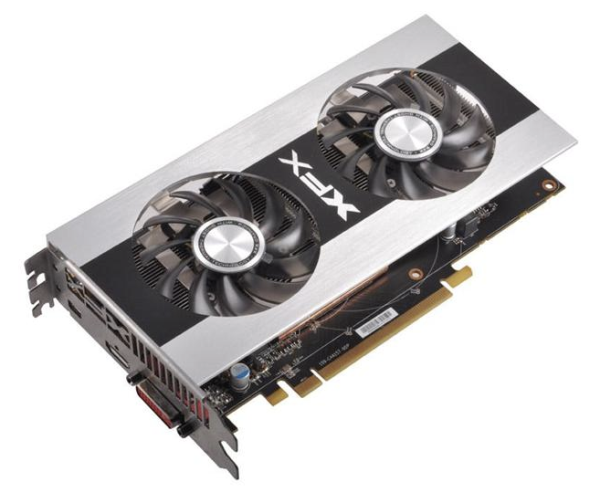 This is the same card as the Double D edition above, right down to the lifetime warranty and included accessories, but it sports roughly 9.5% overclocks on both the core (1095 MHz) and memory (1245 MHz) along with a $10 increase in price - at $179.99, it's tied with the higher-clocked Sapphire OC Edition card as the most expensive in this recap. As with the Double D Edition, warranty good, one Mini DisplayPort bad.
This is the same card as the Double D edition above, right down to the lifetime warranty and included accessories, but it sports roughly 9.5% overclocks on both the core (1095 MHz) and memory (1245 MHz) along with a $10 increase in price - at $179.99, it's tied with the higher-clocked Sapphire OC Edition card as the most expensive in this recap. As with the Double D Edition, warranty good, one Mini DisplayPort bad.
More...
-
02-20-12, 09:00 PM #1597
Anandtech: LG's Optimus Vu Takes On Samsung's Galaxy Note: Are You Ready For A 5.x" P
When Samsung introduced the Galaxy Note at IFA, we were excited, but a bit perplexed. The Galaxy Note's 1280x800 HD Super AMOLED display could be a big winner, but the phone's size seemed too ungainly to make an effective phone. Later PR seemed to confound expectations further by referring to it as a 'phablet' rather than a phone or tablet. After strong European and Asian sales, though, the phone has been released on AT&T in the States, and interest is quite high. So it should be no surprise to see other entrants into this oversized phone space.
LG's Optimus Vu has been teased and leaked numerous times over the last few weeks, and so its announcement this weekend didn't come as a huge surprise. Unique to the Vu, versus the Note, is a 4:3 aspect ratio, which gives its 5" display a more squat appearance than the elongated 16:10 slates we're used to. The IPS display touts a 1024x768 resolution, so it's pixel density isn't quite as high as the Note's, though if it is an RGB screen its subpixel density should be impressively high and its color reproduction should be a bit more accurate than Samsung's SAMOLED display.
Most recent Optimus devices have put Qualcomm's S3 processors to use, with the MSM8660 finding its place in the Optimus LTE recently, alongside the MDM9600 for LTE connectivity. Though Krait SoC's are just around the corner, we expect based on development times that the Vu will feature a similar MSM8660/MDM9600 combination. We have AT&T's Optimus LTE variant in house and so we know what kind of performance we can expect from the device. From a graphics standpoint, the Mali-400 GPU in the Note's Exynos SoC clearly outpaces the Adreno 220 in Qualcomm's S3. Compute performance should be comparable, but with the GPU being leveraged to a greater degree in Ice Cream Sandwich, the user experience delta might grow when both are updated later this year.
When the 4:3 iPad was chased by 16:10 Honeycomb tablets, part of the discussion focused on the ergonomic differences of a slate that's so wide while in landscape mode. So while viewing widescreen content on a widescreen device might be a bit more satisfying, actually using the wider device can be a bit more of a hassle. LG is obviously hewing to the user data that says that larger devices benefit from the 4:3 form factor, and it'll be interesting to see whether the Note or the Vu feel better in the hand while being used as a tablet.
But these are phones, and as such, we're concerned about the feasability of putting such a large device up to our heads. Anand spent some time with the Dell Streak as his only phone, and found the experiencing satisfying and the size a non-issue. What's notable is that the Streak, though longer than the Note and Vu, was also somewhat narrower. The Note and Vu are within a centimeter of each other in both height and width, but the Vu comes in nearly a half inch wider than the Streak. Portability could be a concern, too. With each device pushing six inches of length and over three inches in width, the ability to slip these devices into a pants pocket could be challenged.Physical Comparison LG Optimus Vu Samsung Galaxy Note Dell Streak Galaxy Nexus LTE Motorola Droid RAZR MAXX Height 139.6 mm (5.49") 146.9 mm (5.78") 152.9 mm (6.02") 135.5 mm (5.33") 130.7 mm (5.15") Width 90.4 mm (3.56") 83 mm (3.27") 79.1 mm (3.11") 67.9 mm (2.67") 68.9 mm (2.71") Depth 8.5 mm (0.33") 9.7 mm (0.38") 9.98 mm (0.39") 9.47 mm (0.37") 8.99 mm (0.35") Weight 139 g (4.9 oz) 178 g (6.3 oz) 220 g (7.76 oz) 150 g (5.3 oz) 145 g (5.1 oz) CPU 1.5 GHz Dual-core Qualcomm Snapdragon 1.2 GHz Exynos 4210 Dual-core Cortex-A9 Qualcomm Scorpion @ 1GHz 1.2 GHz Dual-core OMAP 4460 Cortex-A9 1.2 GHz Dual-core OMAP 4430 Cortex-A9 GPU Adreno 220 ARM Mali-400 Adreno 200 PowerVR SGX 540 PowerVR SGX 540 RAM 1 GB LPDDR2 1 GB 512MB LPDDR1 1 GB LPDDR2 1 GB LPDDR2 NAND 32GB NAND 16 or 32GB NAND, up to 32GB microSD 16GB micro SD + 2GB integrated 16GB NAND 16GB NAND, 16GB Class 4 microSD preinstalled Camera 8MP AF with LED Flash + 1.3MP Front Facing Camera 8MP AF with LED Flash + 2MP Front Facing Camera 5MP AF with dual LED Flash + Front Facing Camera 5MP AF with LED Flash + 1.3MP Front Facing Camera 8MP AF with LED Flash + 1.3MP Front Facing Camera Screen 5.0" 1024 x 768 IPS 5.3" 1280 x 800 HD Super AMOLED 5" 800 x 480 4.65" 1280 x 720 HD Super AMOLED 4.3" 960 x 540 Super AMOLED Advanced Battery Integrated 7.7Whr Removable 9.25Whr Removable 5.661 Whr Removable 6.85Whr Internal 12.4Whr
So, this begs the question? Are you interested in a phone this big? Is this meant to somewhat canibalize the small tablet market? Could this be your next phone? Let us know in the comments, we'll have more on the Vu next week, at MWC.
More...
-
02-20-12, 11:10 PM #1598
Anandtech: Lian Li's PC-90: The Hammer Strikes Hard
The majority of the enclosures from Lian Li that we've tested so far have been designed for mini-ITX and micro-ATX builds, but today we have on offer one of their premium full ATX cases, and it's a promising one indeed. Lian Li's PC-90, which they dub "The Hammer," is designed to support HPTX and XL-ATX motherboards while being smaller and lighter than most other enthusiast cases in its class. And while we'd hesitate to call it diminutive, it's definitely smaller than you'd expect.
Lian Li aims to offer a lighter, more austere shell for high performance systems in the PC-90, and we can tell you they've been very successful. The PC-90 is also better than our prior experiences with Lian Li in that it performs right about where you'd expect. Read on for the full details.
More...
-
02-20-12, 11:30 PM #1599
Anandtech: Microsoft Showcases SkyDrive Metro and Desktop Apps for Windows 8
Microsoft has talked a bit about SkyDrive before in its plans for Windows 8, but Microsoft's Mike Torres and Omar Shahine have authored a Building Windows 8 blog post that have made the company's plans for it a bit clearer, and outline the degree to which SkyDrive support will be built in to the new operating system.
The Metro app, pictured above, has been built from scratch for Windows 8 and Windows on ARM and will eventually become the preferred method of working with SkyDrive data (though the service's web interface will still be available). Any Metro application in Windows 8 that can save or open files will be able to do so to and from SkyDrive manually and automatically without any extra coding on the part of third-party developers.
The SkyDrive desktop app is less tightly integrated with the OS - when downloaded and installed, it works more like Dropbox, keeping your SkyDrive files in one folder (which is stored locally for offline access) and synchronizing changes to the server as files are created, deleted, and updated - the interface (as pictured above) is very Dropbox-like, right down to the green checkmarks next to synced items. The SkyDrive client will be able to upload files as large as 2GB to your storage space, and the client will also be available to Windows Vista and Windows 7 clients when it' s launched - sorry, Windows XP users, but the writing has been on the wall for awhile, and Microsoft would very much like it if you would upgrade your operating system.
Microsoft's description of its cloud services - "a single drive that’s available across all of their devices, tailored to the experiences they’re using, providing instant, secure, and private access to their files" - mirrors to a large degree Apple's efforts with iCloud (though iCloud's storage is all used directly by applications via APIs, rather than actually allowing users to access a filesystem. iDisk offers more traditional online storage functionality for Macs, but its discontinuation is imminent) - think one part iCloud, one part Dropbox. Expect Microsoft's strategy for SkyDrive to become clearer as the Windows 8 launch date gets closer.
Early versions of the SkyDrive Metro and desktop apps will be made available with the Windows 8 Consumer Preview later this month. See the link below for additional details.
Source: Building Windows 8 Blog
More...
-
02-21-12, 02:11 AM #1600
Anandtech: Qualcomm Snapdragon S4 (Krait) Performance Preview - 1.5 GHz MSM8960 MDP a
If you've been following our SoC and smartphone related coverage over the past couple of years, you'll probably remember how Qualcomm let us take home an MDP8660 from MWC 2011 and thoroughly benchmark it. Qualcomm has done essentially the same thing this year, this time sending their latest and greatest MSM8960 SoC inside the aptly named MSM8960 Mobile Development Platform (MDP) just before MWC 2012.
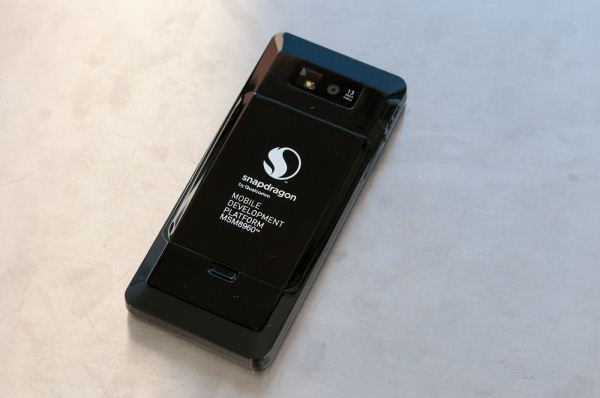
The timing is impeccable as we're fully expecting to start seeing MSM8960 based phones next week at MWC, and we've been telling you to hold off on any smartphone purchases until the 8960's arrival. Today we're finally able to give you an indication of just how fast Qualcomm's next-generation Snapdragon S4 will be. Read on!
More...
Thread Information
Users Browsing this Thread
There are currently 18 users browsing this thread. (0 members and 18 guests)






 Quote
Quote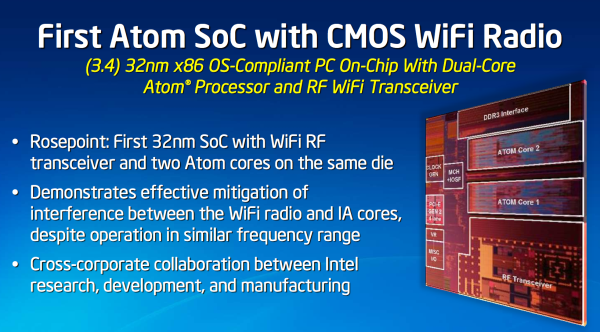
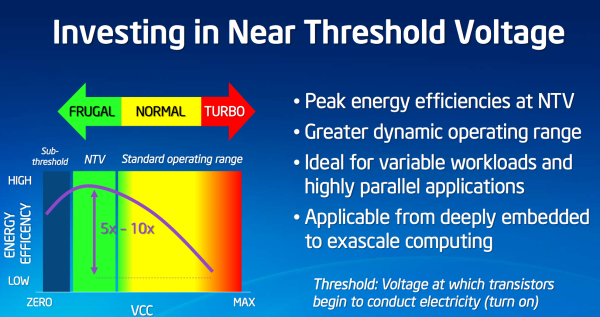
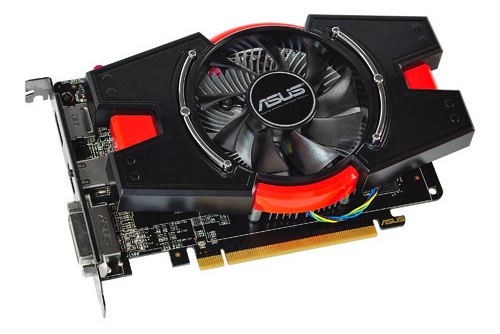

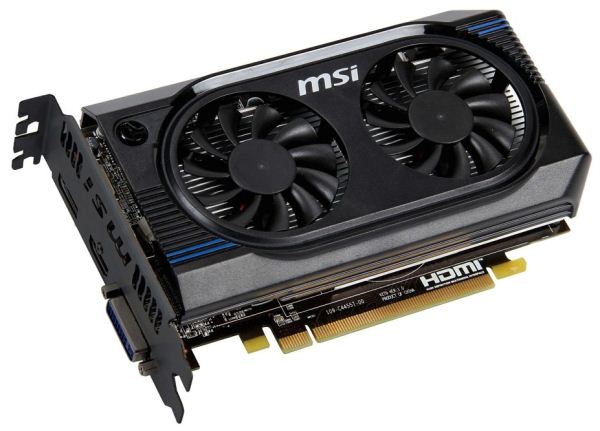

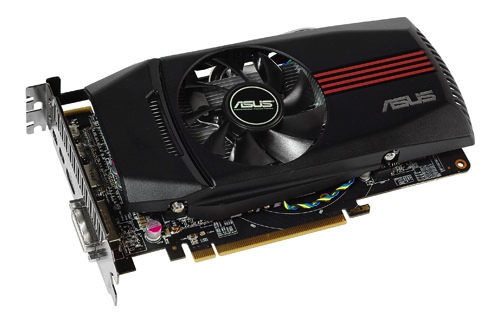



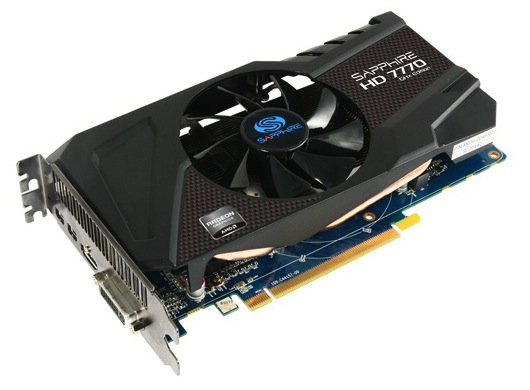
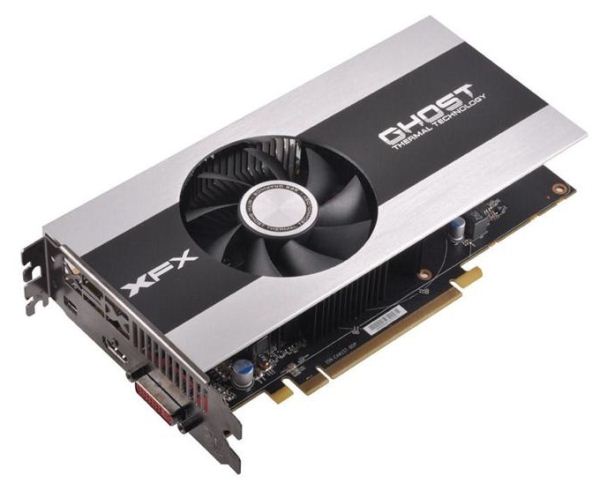





















Bookmarks